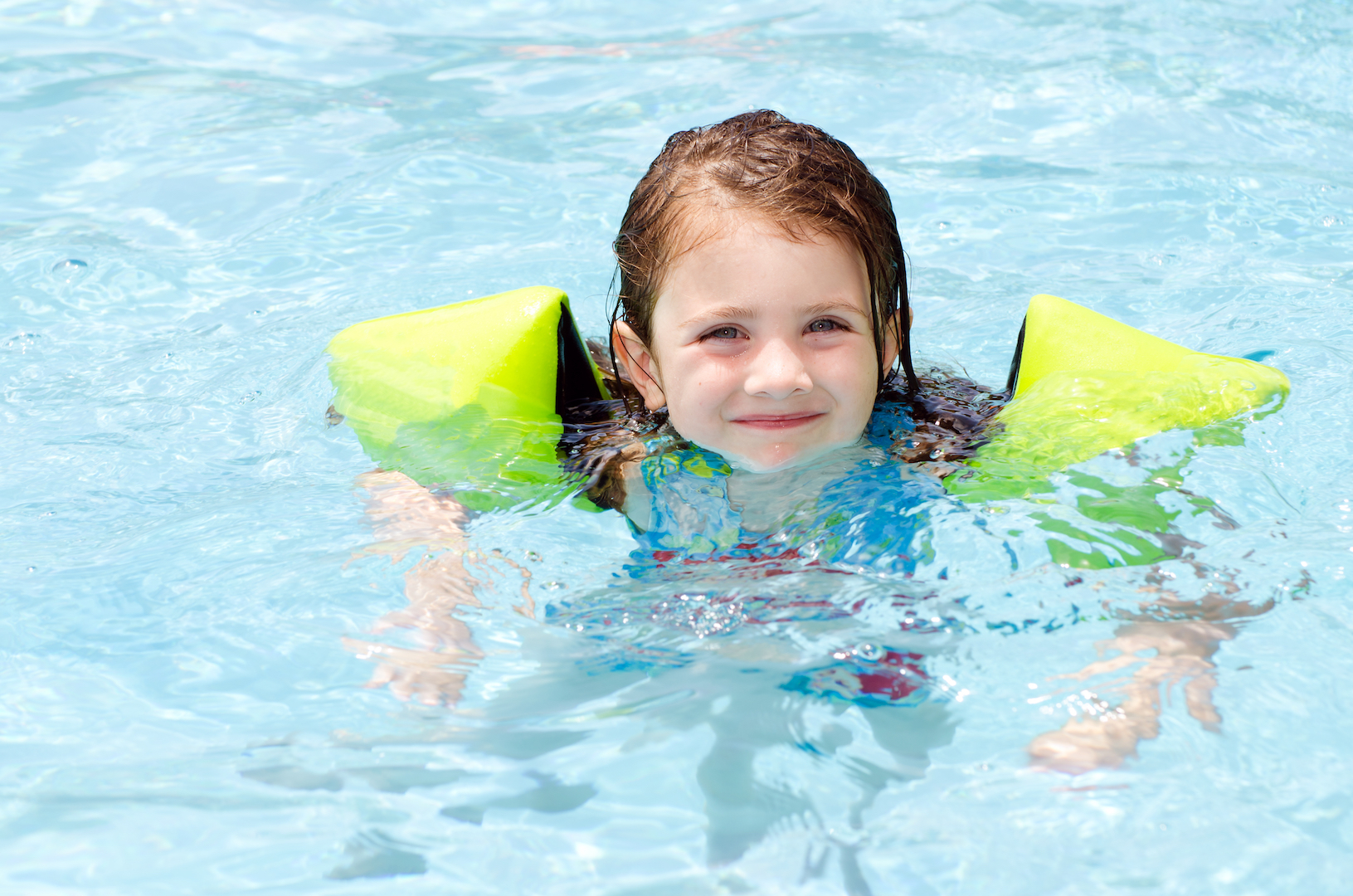
Planning to take your little one to the pool this summer? It may be tempting to put on water wings and let him explore the shallow end. But if your baby or toddler can’t swim, these floatation devices actually put him at risk for drowning. Find out about the safety concerns of using using floaties, and learn the best way to keep your child safe in the water.
The Safety Risks of Water Wings
“Water wings are a tool for parents to let babies to experience the water, but they are not safety devices,” says Lauren Stack, managing director, regional division at the National Swimming Pool Foundation. The wings can easily come off your kid’s arms, especially if they don’t have an attached chest piece. The inflatable material can also puncture, deflate, or loosen. Plus, if your child rolls onto his stomach, the water wings may prevent him from turning over again.
Stack adds that water wings give a false sense of security. Little kids might think they’ll always float to the top of the pool, even if they aren’t wearing the wings. This confidence might inspire them to jump into the water without any safety device, potentially leading to injury or accidental drowning.
And children aren’t the only ones who become too dependent on the floaties. “If parents rely on water wings, you’ll always think your kid will come right up,” says Stack. You may let yourself relax by the pool – scrolling through Instagram or sneaking in a few pages of your novel – and not realize your kid’s water wing has come loose, or they’re lying face-down in the water.
Finally, water wings can prevent your child from learning proper swimming techniques. The floaties put kids’ bodies in a vertical position. In reality, though, bodies don’t stay upright in the water. Children accustomed to floaties must work extra hard to find the correct center of balance.
Should My Kid Use Floaties?
You can still use water wings if desired – as long as your child is within arm’s reach of an attentive adult at all times. “Ninety percent of all drownings happen within 30 feet of safety, and 60% happens within 10 feet of safety,” says Stack. Parents within arm’s reach can immediately sense if their child’s water wings fail and come to the rescue.
As a better solution, Stack recommends enrolling your children in professional swim lessons. “The best thing to do is teach your child how to swim,” she says. “Formal swim lessons reduce the risk of drowning by 88%.” Until then, it's best to choose a personal floatation device that’s approved by the U.S. Coast Guard, and don’t let your child swim alone until he’s completely capable.
